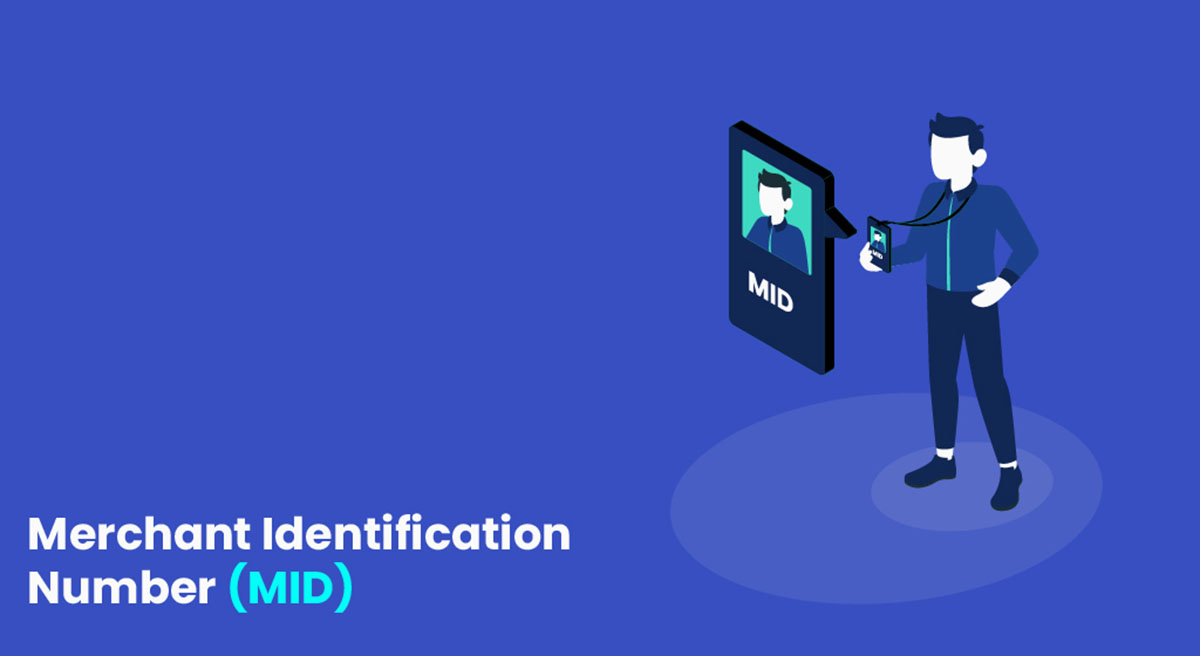

Finance
How To Get Insurance Customers
Published: November 23, 2023
Looking for ways to attract finance customers for your insurance business? Discover effective strategies and techniques to get more insurance customers in the finance industry.
(Many of the links in this article redirect to a specific reviewed product. Your purchase of these products through affiliate links helps to generate commission for LiveWell, at no extra cost. Learn more)
Table of Contents
- Introduction
- Understanding your target audience
- Creating a comprehensive insurance marketing plan
- Building a strong online presence
- Utilizing social media for customer acquisition
- Networking and building relationships
- Providing excellent customer service
- Leveraging customer referrals
- Using incentives and rewards programs
- Tracking and analyzing your results
- Conclusion
Introduction
Welcome to the world of insurance marketing, where the goal is to attract and retain customers in a highly competitive industry. In order to succeed in the insurance business, it is essential to have a comprehensive strategy in place that not only engages potential customers but also differentiates your brand from the competition. In this article, we will explore various techniques and strategies to help you get insurance customers.
Insurance is a vital component of personal and business financial planning. Whether it is life, health, auto, or home insurance, individuals and organizations need insurance coverage to protect themselves against unexpected events and potential financial loss. As an insurance provider, it is crucial to understand the needs and preferences of your target audience so you can tailor your marketing efforts accordingly.
Connecting with your target audience begins with thorough market research and understanding the demographics and psychographics of your potential customers. This will help you identify their pain points, motivations, and preferences, allowing you to develop targeted marketing messages that resonate with them.
Once you have a clear understanding of your audience, it’s time to create a comprehensive insurance marketing plan. This plan should encompass various channels and tactics to reach potential customers and convert them into loyal clients. It’s important to note that effective insurance marketing requires a combination of online and offline strategies in order to reach a wider audience.
Understanding your target audience
The first step in attracting insurance customers is to have a deep understanding of your target audience. You need to identify who your ideal customers are and what they are looking for in an insurance provider.
Start by conducting thorough research on demographic factors such as age, gender, location, and income level. This will help you create customer profiles or buyer personas that represent different segments of your target audience.
Next, delve into the psychographic aspects of your audience. Understand their lifestyle, interests, values, and challenges. This will give you insights into their motivations and buying behaviors, allowing you to tailor your marketing messages to their specific needs.
Additionally, consider the specific insurance product or service you are offering. Different target audiences may have different needs and priorities when it comes to insurance. For example, a young family may be more focused on life insurance and protecting their loved ones, while a small business owner may be more interested in liability insurance.
By understanding your target audience, you can create targeted marketing campaigns that speak directly to their needs and concerns. You’ll be able to craft compelling messages and offers that resonate with them, increasing the likelihood of attracting and converting them into customers.
Furthermore, understanding your audience will also help you choose the most effective marketing channels to reach them. For instance, if your target audience consists of tech-savvy millennials, digital marketing channels such as social media and influencer partnerships may be more effective than traditional print advertising.
Regularly revisit and update your understanding of your target audience as their needs and preferences may evolve over time. Stay informed about industry trends, conduct surveys or focus groups, and closely monitor feedback and interactions with your existing customers.
Creating a comprehensive insurance marketing plan
Once you have a solid understanding of your target audience, it’s time to create a comprehensive insurance marketing plan. This plan should outline the specific strategies, tactics, and channels you will use to attract and acquire new customers.
Start by setting clear and measurable marketing objectives. These objectives should be specific, measurable, achievable, relevant, and time-bound (SMART). For example, you may aim to increase website traffic by 20% or generate 50 new leads per month.
Next, identify the key marketing channels that will help you reach your target audience effectively. This could include a combination of online and offline channels such as search engine optimization (SEO), social media marketing, email marketing, content marketing, print ads, and networking events.
Develop a content strategy that aligns with your target audience’s needs and interests. Create informative and engaging content that showcases your expertise and addresses their pain points. This could include blog articles, videos, infographics, and case studies that provide valuable insights and build trust with your audience.
Invest in search engine optimization (SEO) to improve your website’s visibility in search engine results. Conduct keyword research to identify the relevant keywords and phrases that your potential customers are searching for. Optimize your website’s pages, meta tags, and content to rank higher in search results and attract organic traffic.
Utilize social media platforms to engage with your target audience and build brand awareness. Share valuable content, participate in discussions, and actively respond to customer queries and comments. Consider using paid social media advertising to reach a wider audience and generate leads.
Consider partnering with influencers or industry experts in the insurance field. Collaborate on content creation, guest posting, or hosting webinars to tap into their existing audience and gain credibility and exposure.
Measure and analyze the performance of your marketing efforts regularly. Track key metrics such as website traffic, conversion rates, lead generation, and customer acquisition costs. Understand what is working and what needs improvement, and make data-driven decisions to optimize your marketing strategies.
A comprehensive insurance marketing plan should be flexible and adaptable. Stay informed about industry trends and changes in customer behavior, and adjust your strategies accordingly. Continuously refine and iterate your marketing efforts to maximize your reach and attract new insurance customers.
Building a strong online presence
In today’s digital age, having a strong online presence is crucial for attracting and acquiring insurance customers. An effective online presence allows you to reach a wider audience, showcase your expertise, and build trust with potential customers. Here are some strategies to help you build a strong online presence:
1. Create a professional website: Your website is the online face of your insurance agency. Ensure that it is visually appealing, easy to navigate, and provides relevant information about your products and services. Include clear contact information and calls-to-action to encourage visitors to reach out and request more information.
2. Implement search engine optimization (SEO): Optimize your website and its content using relevant keywords and meta tags to improve its visibility in search engine results. This will help potential customers find your website when they search for insurance-related queries.
3. Produce high-quality content: Regularly create and share informative and engaging content that addresses the needs and concerns of your target audience. This can include blog articles, videos, infographics, and downloadable guides. Establish yourself as a trusted source of information in the insurance industry.
4. Utilize social media marketing: Leverage social media platforms such as Facebook, Twitter, LinkedIn, and Instagram to engage with your audience, share valuable content, and build brand awareness. Invest in targeted social media advertising to reach a wider audience and generate leads.
5. Engage in online communities and forums: Participate in relevant online communities, forums, and industry groups where your target audience is active. Share your expertise, answer questions, and provide valuable insights. This will help you establish credibility and build relationships with potential customers.
6. Implement online review management: Encourage satisfied customers to leave positive reviews on platforms such as Google My Business, Yelp, and industry-specific review websites. Monitor and respond to reviews, both positive and negative, to show that you value customer feedback and are dedicated to providing exceptional service.
7. Use email marketing: Build an email list of interested prospects and existing customers and send them relevant and personalized content. Nurture these leads through targeted email campaigns, informing them about new insurance products, discounts, and other offerings.
8. Invest in online advertising: Consider using online advertising channels such as Google Ads and social media advertising to increase your online visibility and attract potential customers. Target specific demographics and locations to reach your ideal audience.
9. Monitor and analyze online metrics: Regularly track and analyze key online metrics such as website traffic, engagement rates, conversion rates, and lead generation. Use this data to measure the effectiveness of your online presence and make data-driven decisions to optimize your strategies.
Building and maintaining a strong online presence requires consistency, effort, and a customer-centric approach. By implementing these strategies, you can enhance your visibility, credibility, and trustworthiness, ultimately attracting more insurance customers.
Utilizing social media for customer acquisition
Social media platforms provide a powerful avenue for insurance agencies to connect with their target audience and acquire new customers. With billions of active users on various social media platforms, leveraging social media for customer acquisition should be an integral part of your insurance marketing strategy. Here are some effective ways to utilize social media for customer acquisition:
1. Choose the right platforms: Start by identifying the social media platforms that align with your target audience’s demographics and interests. Facebook, LinkedIn, Twitter, and Instagram are popular platforms for insurance professionals. Focus your efforts on the platforms where your audience is most likely to be active.
2. Build a compelling profile: Create an engaging and professional social media profile that effectively represents your insurance agency. Use high-quality visuals, a clear and concise bio, and include relevant keywords to help users find you when searching for insurance-related topics.
3. Share valuable content: Use social media to share informative and engaging content that adds value to your audience. This could include blog articles, educational infographics, videos, and industry news. Aim to become a trusted resource for insurance information, and position yourself as an expert in your field.
4. Engage with your audience: Social media is a two-way communication channel. Respond to comments, messages, and questions from your audience in a timely and helpful manner. Engage in conversations by asking questions, running polls, and encouraging user-generated content. Show that you care about your followers and are accessible to them.
5. Utilize paid advertising: Consider investing in social media advertising to expand your reach and target specific demographics. Social media platforms provide robust targeting options that allow you to reach users based on their location, age, interests, and more. Experiment with different ad formats, such as image, video, or carousel ads, to see what resonates best with your audience.
6. Collaborate with influencers: Identify influencers in the insurance or finance industry who have a strong following and are respected by your target audience. Collaborate with them on sponsored content, guest blogs, or joint webinars to tap into their audience and gain credibility and exposure.
7. Run contests and giveaways: Engage your social media followers by running contests and giveaways. Offer a prize that is relevant and valuable to your target audience and requires some level of engagement, such as liking, sharing, or commenting on your posts.
8. Leverage user-generated content: Encourage your followers to share their insurance-related experiences or testimonials. Share user-generated content on your social media platforms to build trust and credibility. This demonstrates that your agency has a satisfied customer base and can potentially influence others to become customers.
9. Monitor and analyze social media metrics: Regularly track and analyze key social media metrics such as engagement rate, reach, and follower growth. Use this data to understand what content resonates with your audience and make data-driven decisions to optimize your social media strategy.
Remember, social media should be used as a tool to build relationships and establish your agency’s credibility. Provide value, engage with your audience, and showcase your expertise to attract and acquire new customers through social media channels.
Networking and building relationships
In the insurance industry, networking and building relationships play a vital role in acquiring new customers. By connecting with individuals and businesses in your community and industry, you can establish trust, credibility, and ultimately attract new clients. Here are some effective strategies for networking and building relationships:
1. Attend industry events: Participate in local insurance events, conferences, and trade shows to meet professionals in your field. Engage in conversations, exchange business cards, and follow up with potential leads after the event.
2. Join professional associations: Become a member of insurance industry associations and organizations. Attend their meetings, seminars, and networking events to connect with like-minded professionals and stay updated on industry trends. These associations often provide opportunities for mentorship and collaboration.
3. Engage in online communities: Join online forums, groups, and communities where insurance professionals and potential customers gather. Contribute to discussions, answer questions, and provide valuable insights. Actively engage with members and build relationships that can lead to referrals and new business opportunities.
4. Develop strategic partnerships: Identify complementary businesses or professionals that serve the same target audience as you do. Collaborate on joint marketing initiatives, offer bundled services, or refer clients to each other. Strategic partnerships can help amplify your reach and attract new customers through mutual promotion.
5. Volunteer and get involved: Engaging in community service and volunteer activities not only benefits the community but also helps you build meaningful connections. Attend local charity events, sponsor community initiatives, or volunteer with organizations that align with your agency’s values. These activities showcase your commitment to the community and nurture relationships with potential clients.
6. Leverage existing client relationships: Your existing clients are a valuable source of referrals. Build strong relationships with them by providing exceptional service, personalized attention, and ongoing communication. Encourage satisfied clients to refer their friends, family, and colleagues to your agency.
7. Host informative events or webinars: Position yourself as an industry expert by hosting educational events or webinars. Share valuable insights and tips on insurance-related topics that are relevant to your target audience. This demonstrates your expertise, builds trust, and can attract potential clients.
8. Utilize professional networking platforms: Make use of professional networking platforms like LinkedIn to connect with individuals in the insurance industry. Join relevant groups, participate in discussions, and reach out to potential clients or industry influencers. Engage in meaningful conversations and establish mutually beneficial relationships.
9. Follow up and nurture connections: Building relationships is an ongoing process. Follow up with new contacts by sending personalized emails, connecting on social media, or scheduling follow-up meetings. Stay in touch with your network regularly by sharing relevant content or inviting them to events or webinars.
Remember, networking is about building genuine connections and establishing trust. Focus on building relationships rather than solely pursuing immediate sales. By nurturing these relationships over time, you will create a strong network that can generate valuable referrals and new business opportunities.
Providing excellent customer service
One of the key factors in acquiring and retaining insurance customers is providing excellent customer service. Exceptional customer service not only ensures customer satisfaction but also contributes to positive reviews, referrals, and repeat business. Here are some strategies to help you provide excellent customer service:
1. Prompt and responsive communication: Be easily accessible to your customers and respond promptly to inquiries, whether they come through phone calls, emails, or social media. Demonstrating attentiveness and providing timely updates or resolutions shows that you value your customers’ time and concerns.
2. Listen and empathize: Take the time to listen actively to your customers’ needs and concerns. Empathize with their situation and provide personalized solutions. Show that you understand their unique circumstances and are committed to finding the best insurance options for them.
3. Simplify the process: Insurance can be complex and overwhelming for many customers. Simplify the process by explaining insurance concepts in simple terms, guiding them through paperwork, and offering clear instructions. Make the insurance experience as smooth and hassle-free as possible for your customers.
4. Provide education and guidance: Help your customers make informed decisions by providing educational resources and guidance. Keep them updated on industry trends, changes in coverage, and new offerings. Empower your customers to understand their policies and make choices that best suit their needs.
5. Personalize the experience: Treat each customer as an individual and personalize your interactions. Address your customers by their names, remember their preferences, and offer tailored solutions that cater to their specific needs. Personalization helps create a more positive and memorable experience for your customers.
6. Go the extra mile: Strive to exceed your customers’ expectations by going the extra mile. Offer additional assistance, provide proactive recommendations, or offer specialized services that set you apart from the competition. Small gestures and acts of kindness can leave a lasting impression on your customers.
7. Handle complaints with professionalism: Even with the best customer service, there may be times when customers are dissatisfied or have complaints. Handle these situations with professionalism, patience, and a willingness to find a resolution. Address their concerns promptly and follow up to ensure their satisfaction.
8. Seek customer feedback: Regularly seek feedback from your customers to understand their experience with your agency. Surveys, follow-up calls, or online reviews can provide valuable insights. Use this feedback to identify areas of improvement and make necessary changes to enhance the customer experience.
9. Train and empower your team: Provide comprehensive training to your team members on customer service best practices. Emphasize the importance of empathy, problem-solving, and effective communication skills. Empower your team to make decisions and resolve issues on their own, giving them the confidence to provide excellent service.
Remember, exceptional customer service is not just a one-time effort. It should be a core value of your insurance agency. By consistently providing excellent customer service, you will build long-lasting relationships with your customers and establish a reputation as a trusted and reliable insurance provider.
Leveraging customer referrals
Customer referrals can be one of the most effective and cost-efficient ways to acquire new insurance customers. When satisfied customers refer your agency to their friends, family, and colleagues, it serves as a powerful endorsement of your services. Here are some strategies to leverage customer referrals:
1. Deliver exceptional customer experiences: The first step in generating customer referrals is to provide outstanding customer experiences. Exceed your customers’ expectations, offer personalized solutions, and go above and beyond to meet their needs. Satisfied customers are more likely to recommend your agency to others.
2. Ask for referrals: Don’t be afraid to directly ask your customers for referrals. Let them know that you value their opinion and would appreciate any recommendations they can provide. Make it easy for them to refer by providing referral cards or offering an online referral program that incentivizes both the referrer and the new customer.
3. Incentivize referrals: Consider offering incentives to customers who refer others to your agency. This could include discounts on premiums, gift cards, or even special rewards programs. Incentives provide an extra motivation for customers to actively promote your agency to their network.
4. Create a referral program: Develop a structured referral program that outlines the benefits and rewards for customers who refer others. Clearly communicate how the program works, including the criteria for eligibility and the referral process. Promote the referral program through your website, email campaigns, and social media channels to maximize its visibility.
5. Engage with satisfied customers: Regularly engage with your satisfied customers to maintain and strengthen the relationship. Show your appreciation for their business and let them know that their referrals are valued. Keep them updated on new products, industry news, and other relevant information that they can share with their network.
6. Provide referral tools: Make it easy for customers to refer by providing them with the necessary tools and resources. This could include pre-written referral emails or social media posts that they can customize and share with their contacts. By providing these tools, you make the referral process effortless for your customers.
7. Monitor and track referrals: Implement a system to track and monitor referrals. Keep a record of the customers who referred new clients and ensure that they are appropriately rewarded. This not only acknowledges the referrals but also helps you identify your most valuable customers and build stronger relationships with them.
8. Express gratitude: Thank your customers for their referrals and show genuine appreciation. This can be in the form of personalized thank-you notes, acknowledgement on your website or social media platforms, or exclusive loyalty rewards. Expressing gratitude strengthens the bond with your customers and encourages them to continue referring your agency.
9. Follow up with new referrals: Once you receive a referral, promptly contact the prospective customer and provide exceptional service from the start. Ensure that they feel valued and supported throughout the insurance process. By treating referral customers with the same care and attention as your existing clients, you increase the likelihood of turning them into loyal customers who can also refer others in the future.
Remember, customer referrals are built on trust, satisfaction, and relationships. By implementing these strategies, you can harness the power of customer referrals to expand your customer base and attract new clients to your insurance agency.
Using incentives and rewards programs
Incentives and rewards programs can be highly effective tools for attracting and retaining insurance customers. Offering incentives and rewards not only incentivizes customers to engage with your agency but also creates a sense of loyalty and satisfaction. Here’s how you can leverage incentives and rewards programs to drive customer acquisition:
1. Referral rewards: Encourage your existing customers to refer new clients by offering rewards for successful referrals. Provide incentives such as discounts on premiums, gift cards, or cash rewards. This not only motivates your customers to actively promote your agency but also helps expand your customer base through word-of-mouth referrals.
2. Loyalty programs: Implement a loyalty program to reward long-term customers for their continued support and engagement. Offer exclusive benefits, discounts, or personalized services to loyal customers. This promotes customer retention and encourages repeat business.
3. Premium discounts: Consider offering premium discounts to customers who meet specific criteria, such as bundling multiple policies, maintaining a good claims record, or referring new clients. This rewards customer loyalty and encourages them to invest more in their insurance coverage with your agency.
4. Enhanced coverage: Provide additional coverage or upgrades as rewards for customer loyalty or referrals. This can include extending coverage benefits, increasing policy limits, or adding extra features at no additional cost. Offering enhanced coverage demonstrates your appreciation for your customers and adds value to their insurance policies.
5. Exclusive access: Create exclusive access or VIP programs for your top-tier customers. Offer specialized services, personalized advice, and faster claims processing. By making your customers feel valued and providing them with unique benefits, you deepen their sense of loyalty and strengthen the bond with your agency.
6. Milestone rewards: Celebrate customer milestones, such as policy anniversaries or loyalty milestones, by offering special rewards. This can include personalized messages, small gifts, or discounts on premiums. Recognizing these milestones shows your customers that you appreciate their continued trust and support.
7. Gamification: Make the insurance experience more fun and engaging by incorporating gamification elements into your rewards program. Create challenges, quizzes, or interactive activities that allow customers to earn points and unlock rewards. This not only adds an element of excitement but also encourages active participation and loyalty.
8. Partnership rewards: Collaborate with other businesses to offer joint rewards programs. Partner with local businesses, such as car rental companies or home improvement stores, to provide special discounts or perks that can be redeemed by your customers. This expands the benefits of your rewards program and increases its appeal.
9. Personalized rewards: Tailor rewards based on individual customer preferences and interests. Conduct surveys or gather data on customer preferences to offer rewards that are meaningful and relevant to their needs. Personalizing rewards adds a personalized touch, making customers feel valued and appreciated.
When implementing incentives and rewards programs, it’s important to communicate the program details clearly to your customers. Promote the program through various channels, such as your website, social media, and email campaigns. Regularly track and evaluate the success of the program and make adjustments as needed to ensure its effectiveness.
By utilizing incentives and rewards programs effectively, you can motivate customer engagement, foster loyalty, and attract new customers to your insurance agency. These programs create a win-win situation for both your customers and your business, driving customer acquisition and long-term growth.
Tracking and analyzing your results
Tracking and analyzing the results of your marketing efforts is essential for understanding what is working, what needs improvement, and how to optimize your strategies for customer acquisition. By implementing an effective tracking and analysis system, you can make data-driven decisions and continuously improve your insurance marketing initiatives. Here’s how to track and analyze your results:
1. Set measurable goals: From the outset, establish clear and specific goals that align with your overall marketing objectives. These goals should be SMART (Specific, Measurable, Achievable, Relevant, and Time-bound). By setting measurable goals, you have a benchmark against which you can evaluate your results.
2. Use analytics tools: Utilize analytics tools such as Google Analytics, social media insights, and email marketing platforms to track important metrics. These tools provide valuable data on website traffic, engagement rates, conversions, lead generation, and more. Analyze these metrics regularly to gain insights into the effectiveness of your marketing efforts.
3. Monitor website performance: Keep a close eye on your website’s performance by tracking metrics such as total visitors, bounce rate, average session duration, and conversion rates. Identify which pages and campaigns are driving the most engagement and conversions. Use this data to optimize your website for better customer acquisition.
4. Evaluate social media metrics: Assess your social media performance by analyzing metrics such as reach, engagement, follower growth, and click-through rates. Identify which platforms and types of content are resonating with your audience. Adjust your social media strategies accordingly to maximize your impact.
5. Track lead generation and conversion rates: Monitor the number of leads generated through various marketing channels and calculate your conversion rates. Evaluate which channels are driving the highest quality leads and conversions. This allows you to allocate resources effectively and optimize your customer acquisition efforts.
6. Track customer referrals: Keep track of customer referrals to assess the impact of your referral programs. Measure the number of referrals received, the conversion rates of referred leads, and the resulting revenue generated. This information helps you understand the success of your referral initiatives and identify areas for improvement.
7. Conduct customer surveys: Gather feedback from your customers through surveys to gain insights into their satisfaction levels and preferences. Ask for feedback on their experience with your agency, their perception of your customer service, and their likelihood of referring others. Use this information to improve your customer acquisition strategies.
8. Analyze cost-effectiveness: Evaluate the cost-effectiveness of your marketing efforts by calculating the customer acquisition cost (CAC) for each channel and campaign. Compare the CAC to the lifetime value of a customer (LTV) to ensure that your return on investment (ROI) is positive. Identify channels with the best ROI and allocate resources accordingly.
9. Continuously optimize: Regularly review and analyze your results to identify opportunities for improvement. A/B test different strategies, messaging, and channels to determine what yields the best results. Make data-driven decisions and continuously optimize your marketing efforts based on the insights gained from tracking and analysis.
Remember, tracking and analysis should be an ongoing process. Stay updated on industry trends, monitor changes in customer behavior, and adapt your strategies accordingly. By continuously monitoring and analyzing your results, you can refine your customer acquisition strategies and drive long-term success in the insurance industry.
Conclusion
Acquiring and retaining insurance customers requires a thoughtful and comprehensive approach. By understanding your target audience, creating a robust marketing plan, building a strong online presence, utilizing social media effectively, networking and building relationships, providing excellent customer service, leveraging customer referrals, using incentives and rewards programs, and tracking and analyzing your results, you can enhance your customer acquisition strategies and drive business growth in the competitive insurance industry.
Understanding your target audience is the foundation of successful customer acquisition. By conducting thorough market research and crafting targeted messages, you can connect with potential customers on a deeper level. Building a comprehensive marketing plan that encompasses various online and offline channels allows you to reach a wider audience and make an impact.
A strong online presence is essential in today’s digital landscape. Optimizing your website for search engines, sharing valuable content on social media, and engaging with your audience help establish your agency as a trusted and knowledgeable resource.
Networking and building relationships within your industry and community foster trust and credibility. Attend industry events, join professional associations, and volunteer to connect with potential customers and industry peers.
Providing excellent customer service is key to retaining customers and encouraging referrals. By prioritizing prompt and responsive communication, personalized service, and proactive problem-solving, you exceed customer expectations and establish long-lasting relationships.
Leveraging customer referrals and implementing incentives and rewards programs can turn satisfied customers into advocates who promote your agency to their network. By incentivizing referrals and offering loyalty rewards, you create a positive feedback loop that drives customer acquisition.
Tracking and analyzing your results through metrics and analytics allows you to make data-driven decisions. By monitoring key performance indicators and evaluating the effectiveness of your marketing efforts, you can continuously optimize your strategies and drive better results.
In conclusion, by implementing these strategies and techniques, you can attract and acquire insurance customers effectively. Remember to adapt and refine your approaches as industry trends and customer preferences evolve. Providing exceptional value, personalized experiences, and building strong relationships will set your agency apart and help you succeed in the competitive insurance market.














